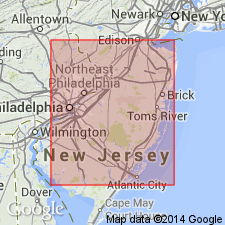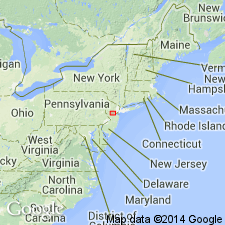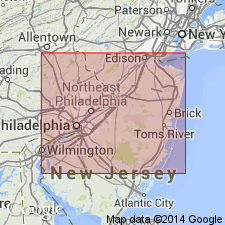
- Usage in publication:
-
- Columbus bed
- Modifications:
-
- Named
- Dominant lithology:
-
- Sand
- AAPG geologic province:
-
- Atlantic Coast basin
Summary:
Columbus bed defined as sand underlying Marshalltown bed and overlying Woodbury bed. All included in Clay marl series [Matawan group].
Source: GNU records (USGS DDS-6; Reston GNULEX).

- Usage in publication:
-
- Columbus sand
- Modifications:
-
- Revised
- Overview
- AAPG geologic province:
-
- Atlantic Coast basin
Summary:
Columbus sand described as white or yellow quartz sand marked by delicate lines of red. Thickness 20 to 100 ft. Overlies Woodbury clay and underlies Marshalltown clay marl.
Source: GNU records (USGS DDS-6; Reston GNULEX).

- Usage in publication:
-
- Columbus sand†
- Modifications:
-
- Abandoned
- AAPG geologic province:
-
- Atlantic Coast basin
Kummel, H.B., 1907, [footnote]: New Jersey Geological Survey Report on Paleontology, v. 4, p. 17.
Summary:
The term Columbus as here used has been found to conflict with its prior use in Ohio for a Devonian formation and in this report the term Englishtown sand will be used instead, as the formation is well developed near that place in Monmouth Co., NJ.
Source: GNU records (USGS DDS-6; Reston GNULEX).
For more information, please contact Nancy Stamm, Geologic Names Committee Secretary.
Asterisk (*) indicates published by U.S. Geological Survey authors.
"No current usage" (†) implies that a name has been abandoned or has fallen into disuse. Former usage and, if known, replacement name given in parentheses ( ).
Slash (/) indicates name conflicts with nomenclatural guidelines (CSN, 1933; ACSN, 1961, 1970; NACSN, 1983, 2005, 2021). May be explained within brackets ([ ]).

